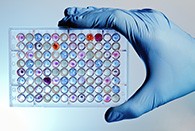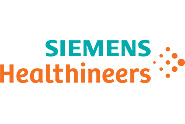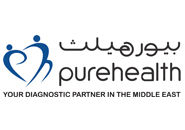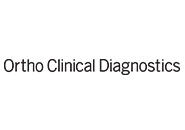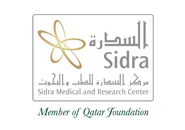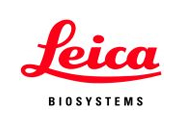Mass Spectrometry: Changing the Clinical Lab
By Joe M. El-Khoury, Assistant Professor of Laboratory Medicine, Yale University, USA, 16 January 2017
Mass spectrometry has historically been limited to research laboratories, but the advent of soft ionization techniques such as electrospray ionization (ESI) and matrix assisted laser desorption ionization (MALDI) in the late 1980s, for which the inventers were jointly awarded the 2002 Nobel prize in Chemistry, rendered liquid chromatography-tandem mass spectrometry (LC-MS/MS) an indispensable tool for analyses of small and macro-molecules in biological fluids. Recent improvements in sensitivity and affordability have encouraged the adoption of this technology for routine applications in the clinical laboratory. Initially, clinical labs focused on its utilisation on drugs of abuse confirmation, newborn screening, and steroid analysis. Today, clinical applications of mass spectrometry are being used in almost all areas of laboratory medicine, including microbiology, anatomic pathology, genetic disorders and pharmacogenetics, immunology, endocrinology and toxicology. In addition, the rapid proliferation of this technology over the last two decades has had a tremendous impact on the quality of the results clinical laboratories report, even those that do not have MS. Standardisation of assays for creatinine, steroids, lipids, hemoglobin A1c, vitamin D and troponin are all based on MS as the primary reference method. The technology continues to adapt and expand into new areas of opportunity, including direct tissue analysis and imaging and point-of-care diagnostics. In this article, we review the factors that led to the widespread adoption of MS in the clinical laboratory and discuss its strengths, weaknesses, opportunities and threats.
The Gold Standard
One of the major events that led to the move of MS from research to the clinical laboratory was the accident on the aircraft carrier Nimitz on May 26, 1981. The aircraft crashed while landing, killing 14 and injuring 45. Immunoassay testing revealed that a large percentage of samples tested positive for marijuana metabolites, which prompted former US President Ronald Reagan to develop a zero tolerance for drugs of abuse in the military. However, immunoassays were known to cause a large number of false-positive results and antibody-based drug screens began to be considered as “preseumptive” until confirmed by gas chromatography-mass spectrometry (GC-MS). This requirement drove the development of MS in toxicology laboratories. However, a major limitation of GC-MS has always been the need for derivatization and laborious sample preparation procedures to make analytes suitable for analysis. This slow throughput of GC-MS is why immunoassays remained largely in use, although their specificity was known to be extremely poor.
Unlike GC-MS, LC-MS/ MS does not require laborious sample preparation procedures, which often involve tedious derivatization, or lengthy chromatographic run times. In fact, it is now common to see published LC-MS/MS methods that require only protein precipitation, solid-phase extraction or liquid-liquid extraction with chromatographic run times not exceeding five minutes. In addition, LC-MS/MS widened the spectrum of analytes that can be measured by MS because it is not limited by molecular mass or polarity of the target analytes compared to GC-MS. As a result, LC-MS/MS has found numerous applications in particularly challenging areas like endocrinology (steroids), therapeutic drug monitoring (immunosuppressants), inborn errors of metabolism (organic acids and acylcarnitines), clinical and forensic toxicology (drugs of abuse testing), and nutrition assessment (vitamins). Also, with the advancement in MALDI-TOF and orbitrap technologies, these applications have been expanded to microbiology, metabolomics, proteomics and lipidomics. On the other hand, in comparison with immunoassays, LC-MS/ MS still offers much lower throughput but requires lower reagent cost per test with a much higher specificity for most applications, which is why this technique is often considered the “gold standard”. For instance, the American Endocrine Society issued a statement in 2007 recommending the use of LC-MS/MS over immunoassays for the determination of steroid hormones.
Opportunities and Challenges
Although MS continues to make significant contributions to patient care, major areas for improvement of this technology remain, including automation, throughput, complexity, standardisation, instrument cost, field service, interfacing with laboratory information systems (LIS), and regulatory uncertainty. Manufacturers are gearing up the effort to increase the throughput of LC-MS/MS with some manufacturers introducing multiplexing capabilities that allow connection of up to four parallel LC systems synchronised to a single MS analyzer, which allows multiple samples to be analyzed simultaneously. Others have partnered with the automation industry to work on fully automate solutions from sample preparation to analysis. Nevertheless, the number of LC-MS/MS instruments currently in use in clinical laboratories is still limited when compared with other diagnostic analyzers for several reasons. First, the Achilles’ heel of LC-MS/MS is its complexity and the need for highly skilled laboratory staff to assist with method development and thorough validation as well as maintaining the instruments. While some manufacturers are now assisting with the process and are offering “kits” that include columns, calibrators and controls, most tests offered on LC-MS/MS remain “home brew” assays and standardisation remains a critical issue to address. Another major hurdle is the large initial cost required to purchase the instrument (US$200,000 to US$400,000), which can be a deterring factor for smaller laboratories. The lack of appropriate field service support that meets the needs of a clinical lab is another limitation to the wide adoption of LC-MS/MS. Finally, there has been little to no effort interfacing LC-MS/MS with LIS, which is crucial in eliminating specimen mis-identification and post-analytical transcription errors, especially in high volume laboratories. Finally, US laboratories are facing major uncertainty with the Food and Drug Administration (FDA) proposing tighter regulations on laboratory developed tests (LDTs), which is how all LC-MS/MS methods are currently categorised. The only exception to this is a Tacrolimus kit offered by Waters Corporation® which is an FDA-approved kit. We expect more of these kits to be made available by manufacturers soon so that laboratories do not face the burden and delay of a costly FDA review.
LC-MS/MS offers great potential for the diagnostic laboratory in spite of all of the associated challenges. In the US, the Clinical and Laboratory Standards Institute (CLSI) has recognised the need for a uniform set of guidelines for validation of LC-MS/MS methods, and has gathered the experts in the field and recently released C62-A, which is a new standard for clinical MS development, evaluation and validation. Its availability represents a significant step forward in ensuring high quality methods are used for patient care. Moving forward, communication with manufacturers is also crucial to making sure the needs of the clinical laboratory are met in terms of field service, affordability, automation, and LIS interfacing.
Future Development
The future is bright for MS in laboratory medicine. With miniaturization of MS systems and creation of portable devices, it is expected that this technology will soon be available in a point-of-care format in various settings such as physician offices or emergency medicine. Currently, MS is already being used in the operating rooms at the Imperial College in London, where the surgeon’s knife is connected to a mass spectrometry to distinguish normal from cancerous tissue in real-time. These applications demonstrate the tremendous flexibility this technology offers and its potential to expand beyond the traditional walls of the clinical laboratory. Therefore, there is no doubt that MS is a revolutionary technology that has profoundly impacted the practice of laboratory medicine and continues to expand its role into other areas of diagnostic medicine.
References
References available on request – [email protected]

